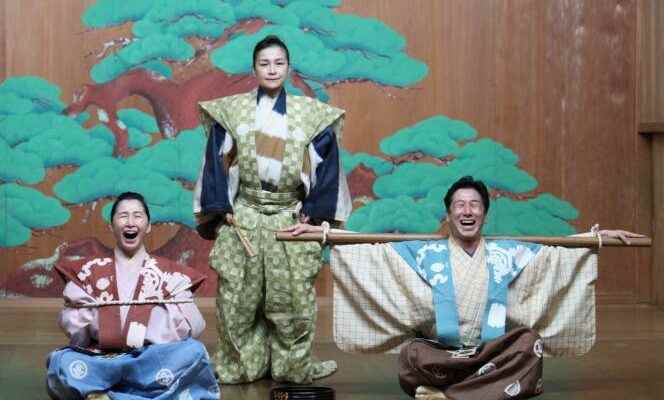No regulation formally excludes women from the practice of no theater, kabuki or bunraku – doll theater. But a tradition, which banished them from the stage for centuries, remains rooted in the classical arts. Two sisters, Junko Izumi and Tokuro Miyake, descended from a line of nineteen generations of kyogen actors – the fourth major expression of classical Japanese theater – today struggle to open a breach in a world dominated by men, who “without opposing an evolution, hardly encourage it”notes Tokuro Miyake, sister of the current head of the Izumi school, Motoya Izumi.
The kyogen (“senseless words”, in Japanese), which originates from the sarugaku (“singery”), a popular art which would have come from China, is intrinsically linked to no, the two forms having been born in the 14the century. The genre consists of short amusing sketches interspersed between no pieces, but which can also be presented separately. “Kyogen is a great expression of the art of laughter”, continues Tokuro Miyake. With the number, it was registered in 2008 on the list of intangible cultural heritage of Unesco.
To the “shady depth” and to the solemn slowness of the masked characters of the no, evanescent evocations of beings from the beyond, the kyogen opposes the mobility of the face and a gesture in perpetual motion. An art of entertainment, he abruptly brings the spectator back from the peaks of the symbolic to the realism of this lower world through outspokenness and a burlesque situation inspired by events of daily life. “If you laugh, the god of happiness comes knocking at the door”said Sensaku Shigeyama (1920-2013), living national treasure, of the Okura school, the other great dynasty of kyogen actors.
Warrior Class Art
From the middle of the XVe century at the beginning of the XVIe, the no has also been interpreted by high-level female troops. Then, following the seizure of power by the Tokugawa shoguns, in 1603, it became a kind of official art of the warrior class. He lost his creative freedom and banished women from the scene. These suffered the same fate for the kabuki which, originally, was a show performed by women linked to the world of pleasure. Accused of prostituting themselves, the actresses were replaced by young ephebes (devoting themselves to the same practices…), who were to give birth to the great art of reconstructed femininity in the onnagata (actors playing female roles).
Women will return to the stage following the changeover to modernity, in the Meiji era (1868-1912), with the shinpa “theatrical renewal” movement and, at the beginning of the 20ethe “new theatre” shingeki, inspired by European theatrical art. If kabuki remains played only by men, it was not until the day after the defeat that a woman, Kimiko Tsumura (1902-1975), was recognized in 1948 as an actress of no. Today, of the 1,400 members of the no actors association, 240 are women. In the case of kyogen, nothing has really changed.
You have 44.39% of this article left to read. The following is for subscribers only.
